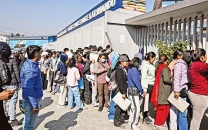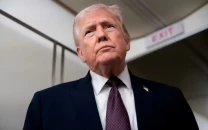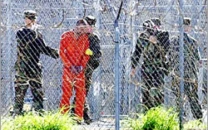India defeats polio, global eradication efforts advance
India marks three years since its last reported polio case on January 13.

India marks three years since its last reported polio case on January 13. PHOTO: AFP
The landmark is seen as confirming one of India's biggest public health success stories, achieving something once thought impossible, thanks to a massive and sustained vaccination programme.
With the number of cases in decline in Nigeria and Afghanistan, two of only three countries where polio is still endemic, world efforts to consign the crippling virus to history are making steady progress.
"In 2012, there were the fewest numbers of cases in endemic countries as ever before. So far in 2013 (records are still being checked), there were even less," Hamid Jafari, global polio expert at the World Health Organisation told AFP.
"If the current trends of progress continue we could very easily see the end of polio in Afghanistan and Nigeria in 2014," added Jafari, hailed as having played a crucial role in India's victory.
Despite the success, isolated polio outbreaks in the Horn of Africa and war-wracked Syria emerged as new causes for concern in 2013.
Countries are certified by the WHO as being polio-free if they go 12 months without a case, and are then said to have eradicated it after a period of three years without new infections.
India will likely receive this endorsement only at the end of February or early March, which will trigger more exuberant celebrations than are likely to be seen on Monday.
There also remain reasons for caution, with the virus still considered endemic in Pakistan, where vaccinators are being killed by militants which view them as possible spies.
Hopes of progress were given a boost last month when Pakistan Tehreek-e-Insaf chairman Imran Khan pledged to personally spearhead vaccination efforts in Khyber-Pakhtunkhwa.
India's success was built on a huge vaccination programme that began in the mid-1990s with the backing of the central government and a coalition of charities, private donors, and UN agencies.
An army of more than two million vaccinators, backed by local religious and community leaders, canvassed villages, slums, train stations and public gatherings in even the most remote parts of the country.
The country reported 150,000 cases of paralytic polio in 1985, and it still accounted for half of all cases globally in 2009, with 741 infections that led to paralysis.
In 2010, the number of victims fell to double figures before the last case on January 13, 2011, when an 18-month-old girl in a Kolkata slum was found to have contracted it.
The girl, Rukshar Khatoon, is now attending school and leads a "normal life", although she still suffers pain in her right leg from the disease, doctors and her parents told AFP.
"She can now stand on her feet and walk, but can't run," her father Abdul Saha said. "When her friends play, she remains a spectator."
Saha, a father of four, conceded he had taken his son to get immunised but not his two daughters. "It was a grave mistake," he said, adding that after Rukshar contracted the disease he made sure his fourth child received the anti-polio drops.
Nicole Deutsch, head of polio operations for UN children's arm UNICEF in India, called three years without polio in India "a monumental milestone".
Jafari highlighted the immense knock-on benefits for public health in India, which is still afflicted by other preventable diseases, widespread malnutrition and poor sanitation.
"India has now set other important public health goals as a result of the confidence that the country has got from the successful eradication of polio," he said, citing a new measles eradication goal.
The wretched sight of crippled street hawkers or beggars on trolleys in India will remain, however, as a legacy of polio during the country's time as an epicentre of the disease.
In the absence of any official data, most experts agree there are several million survivors left with withered legs or twisted spines who face discrimination and often live on the very margins of Indian society.



















COMMENTS
Comments are moderated and generally will be posted if they are on-topic and not abusive.
For more information, please see our Comments FAQ